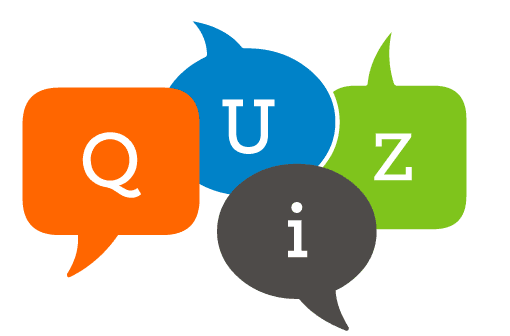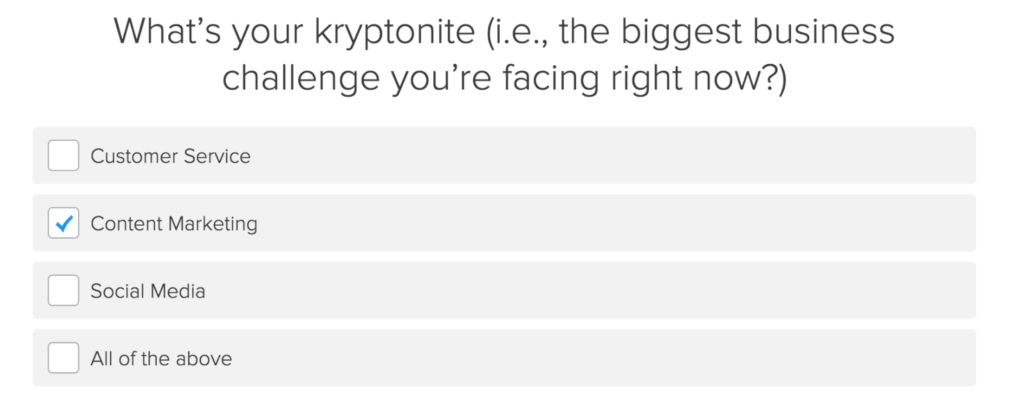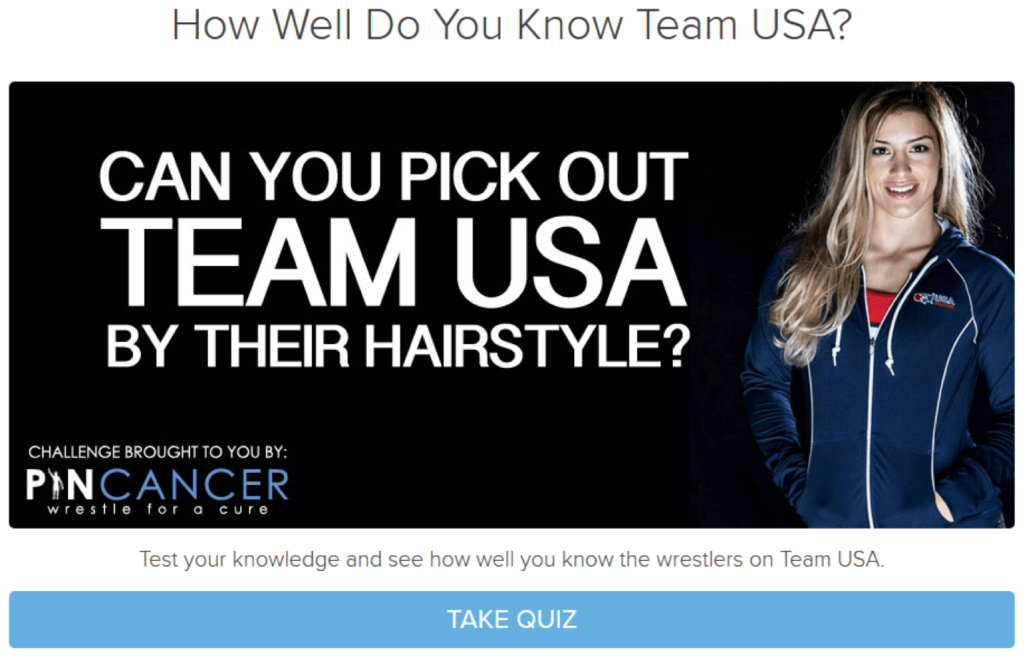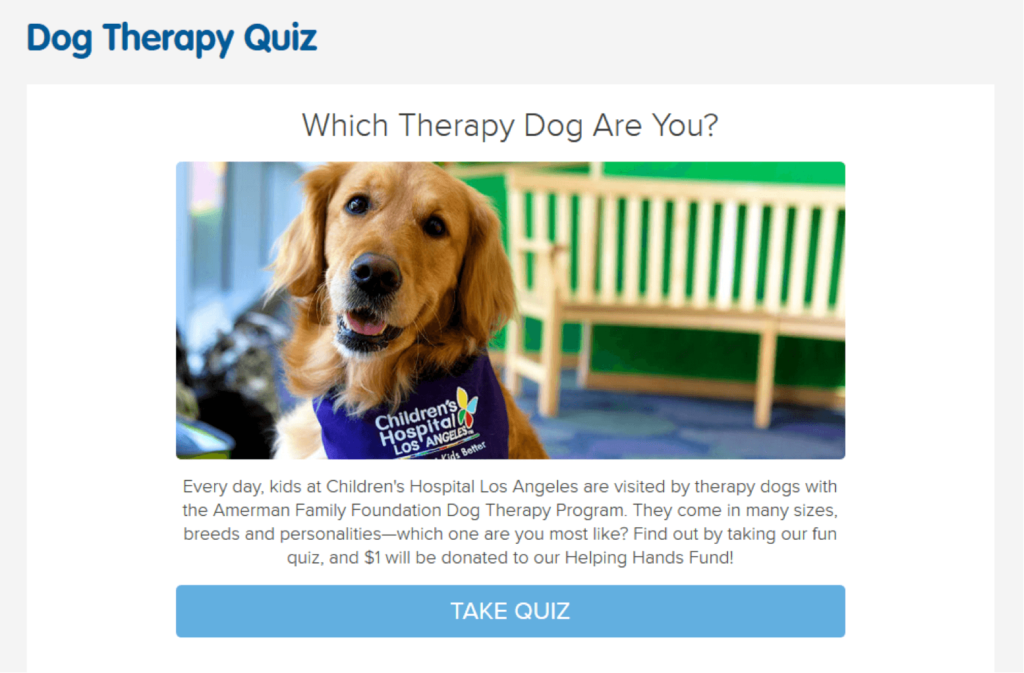Social media has taken to quizzes with gusto since the first one popped up on Facebook or Twitter. It didn’t take long before marketers noticed, and began to experiment with quizzes as a way to generate leads.
As it turned out, quizzes have the ability to efficiently draw in a large audience, and have a long, evergreen lifespan. You can create quizzes that are both entertaining and interactive, and yes, they have made a large impact as a method of lead generation.
A good quiz is enjoyable and fun for people to take. Like everything that makes success look easy, the behind-the-scenes elements of a successful quiz are intricate.
With over 25,000 quizzes under our belt here at Interact, we’ve had a lot of practice getting quizzes right, and we’re happy to share our best practices as guidelines for your own quiz creation. We’ll even outline three examples of content marketing quizzes and then discuss various methods of distribution to drive traffic to your quiz.
Let’s get started.
Part 1: How to Create an Alluring Quiz
Pick the Right Topic
Before you develop a quiz, you need to have a good idea that will likely appeal to a wide audience of your targeted prospects. For some companies, the answer’s obvious; if you’re a toy manufacturer, running a “What kind of action figure are you?” quiz in your blog makes sense. But for most of us, the best subject isn’t as clear. Here are some tips on picking a topic:
- Know Your Audience: Create a quiz for a specific group of people. You’re only setting yourself up for failure if you try to reach the world as a whole. Start small. If your quiz addresses a group of people that’s very interested in the quiz, it’s more likely to succeed, even if that group isn’t that big.
- Write to One Person: Think of a person who would really enjoy your quiz. Write to that person. This will help you develop a more comfortable style of writing with a friendly tone. If you can’t think of a person, you might want to rethink the idea.
Create Charming Titles
Think of the title as though it was a movie trailer. Would it attract the attention of someone in the audience you’re looking for? Enough for them to buy a ticket?
If there isn’t anything obvious, there are title templates that consistently perform well and encourage clicks:
- The “Actually” Title: “How much do you actually know about the National Basketball Association?” The “actually” title is just a knowledge test, but once you throw in the word “actually” or “really,” it becomes a challenge; and no one wants to back down from a challenge.
- The “Which (Blank) Are You?” Title: “Which ice cream flavor are you?” These quizzes are based off the traditional Meyers-Briggs personality quiz; just substitute the personality types with the corresponding results for your quiz topic.
- The Celebrity Comparison Title: “Which character from this popular show are you?” This template is the same thing as a personality quiz, but you can place different results into the quiz that fit your business.
Crafting the Questions
This is your chance to create a conversation with your quiz-takers and build rapport. This is where quizzes work their magic. Unlike other forms of content, quizzes are a one-on-one medium where you can speak directly to each individual that takes your quiz.
- Let Your Personality Shine: Or create a persona and let that shine. The best quizzes create a connection with people by injecting some personality in it, whether it’s your own or one you created.
- Follow the Pub Rule: Ask questions as if you were in a pub with friends. This rule is named after the Irish Post, a UK newspaper that effectively reached Irish people living in London with a clever quiz that had a conversational question style.
- Don’t Be Afraid To Get Personal: Encourage people to tell you about themselves through their answers to your quiz questions.
Design Results That Get Shared
The results people get when they take your quiz are your chance to get shared, promote products, and get clicks to your website. Here are some simple rules to follow to maximize your chance of success:
- Be Positive: People tend to share things that make them look good on social media. Make the results to your quizzes positive to maximize the possibility of people sharing your quiz.
- Don’t Lie: While you want to be positive, you don’t want to inadvertently lie either. Base your positivity on facts. For example, if you tell someone they’re a truck, note how reliable and useful trucks are and avoid mentioning how big and dirty they can be.
- Prepare To Be Shared: There’s a specific formula for how quizzes get shared. That formula is: “I got [my result][title of the quiz].” For example, “I got Banana Cream Pie! Which pie are you?” When writing your quiz, make sure your quiz results and quiz title play nicely together when shared.
Part 2: Three Ways to Use Quizzes
Here are three examples of ways companies have used quizzes to promote their businesses:
Tie Your Quiz to Your Website’s Personality
It’s a good thing when your brand (or product or service) has a distinct personality. Tying your quiz to this personality, when you can, gives you consistency and a stronger, more resonant pull on your target market. For example, the insurance company that uses a gecko as a mascot could do a whole range of lizard-related quizzes. Those people who are drawn to these animals would be likelier to take the quiz, likelier to feel more comfortable about the website that reinforces that image, and likelier to fill out the form that gives them their results – and gives you a lead.
Our first example comes from Pin Cancer, with this “How Well Do You Know Team USA?” Quiz. Pin Cancer is a non-profit organization that sponsors pledges based on a wrestler or team’s wins, pins, or takedowns to fight cancer.
Pin Cancer’s slogan is “Wrestle for a Cure.” This quiz hones in on Team USA specifically, it really hits home as far as the target audience Pin Cancer is focused on.
In an earlier iteration of this campaign (now closed), Pin Cancer scored a choke-slamming 3,621 leads in just three days! It was their most successful lead generation campaign to date.
Create a Knowledge Test within Your Information Content
Our next example comes from the World Wildlife Fund. As an organization that protects endangered species around the world, they created a quiz titled “Who’s Your Animal Soulmate?” based on the information found on their page.
In a case study that highlights their success, World Wildlife Fund’s “Who’s Your Animal Soulmate?” quiz was taken 2,703 times with opt-ins (name and email) at 1,043, resulting in an astounding 38.5% conversion rate! Now those are numbers worth boasting about.
Repurpose Past Successes to Squeeze More Leads Out of Your Site
Marketers are always creating content, and in most cases, some of this content will be more popular than others (see 80/20 rule). Another way to use quizzes to generate leads would be to repurpose your most popular content (the 20% that gets 80% of the traffic).
To amplify the amount of attention that their Amerman Family Foundation Dog Therapy Program gets, Children’s Hospital Los Angeles created a quiz titled “Which Therapy Dog Are You?
In this case study highlighting their success, Children’s Hospital LA generated 30,600 leads, and $30,000 in donations within three weeks.
Part 3: Distributing Your Quiz
Now that you’ve created your quiz and looked over several examples of how to use it, you’ll want to promote it so people can take it. Here are four easy ways to do just that:
1. On Your Website or Blog
A quiz can easily be embedded onto any webpage much like a YouTube video. When a quiz is on your website, all the social shares, links, and comments happen on your domain, eliminating the risk of losing people to other distractions.
2. On Facebook
There are two different options for sharing quizzes on Facebook; each has its own advantage:
- On Your Timeline: Sharing your quiz on your own timeline is the easiest option for getting your quiz out there. Just grab an image (or use one from your quiz) and share it along with a link to your quiz. Make sure the link is either to your blog or a dedicated quiz page.
- In a Custom Tab: If you want a more permanent fixture on your Facebook page to use the quiz, you can embed it into a custom tab. UC Davis provides a good example of how they embedded their quiz “Which Famous Aggie Are You?” onto their new students page so that potential students could feel more connected to their school.
3. On Twitter
Twitter is essentially the same concept as sharing something on your Facebook timeline. It’s always a good idea to visually represent your quiz with an image.
Timing is everything.
The time of day when you share your quiz will have a major impact on how much activity it gets. Share it during peak hours, like during the middle of the day on a weekday. Share it a couple more times after that and then stop completely to avoid spamming it.
4. In an Email Newsletter
Have subscribers? Share your quizzes through an email newsletter to drive engagement to your webpage! Make sure you provide a link to your quiz that leads to a dedicated page and nothing else.
Part 4: Now Back to You
Creating a popular quiz isn’t the easiest thing in the world, but once you’ve developed a solid understanding of how quizzes can be incorporated into your content marketing, you can use them as a new way to reach and engage your audience.
So what are you waiting for? Start using quizzes today!
Need help determining where you can incorporate quizzes into your content marketing plan? Take a look at our free toolkit, 4 Steps to Develop a Content Plan, and learn everything you need to know about how to identify your audience and develop content for different buyer personas, and how to identify gaps in your content plan, so you can create the most effective quizzes that will fit into your content strategy.










